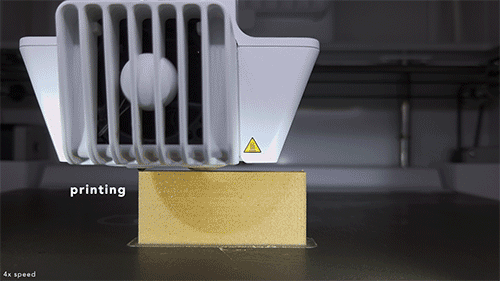Researchers from MIT and Delft University of Technology have introduced a new technique in 3D printing called speed-modulated ironing. This method enables the creation of complex, multi-colored, and textured objects more quickly and with less waste compared to traditional multimaterial 3D printing methods. Current 3D printers often require multiple nozzles to deposit various materials, resulting in time-consuming processes and material waste. Speed-modulated ironing solves this by utilizing a dual-nozzle system that allows a more efficient approach to producing detailed objects.
How It Works: Heat-Responsive Filaments and Dual Nozzles
The new method involves the first nozzle depositing a heat-responsive filament, while the second nozzle “irons” the material by reheating it at controlled speeds, triggering specific responses such as changes in color, texture, or opacity. The innovative process doesn’t require any hardware modifications and operates more efficiently by adjusting the speed of the second nozzle instead of the temperature, allowing precise control over the printed object’s characteristics.
This approach not only increases the speed of production but also significantly reduces waste by using a single material to produce varied outcomes. As Mustafa Doğa Doğan PhD ’24, co-author of the study, explains, “We want to use a limited set of materials to create a much more diverse set of characteristics for 3D-printed objects.”
Applications and Benefits: Real-World Solutions
The speed-modulated ironing method opens doors to various real-world applications. For instance, the team successfully created translucent water bottles with gradients of opacity and bike handles with enhanced grip textures using the same material. Traditional methods of multimaterial 3D printing are not only slower but also lack the fine detail and precision offered by this new technique. With speed-modulated ironing, the researchers were able to achieve smoother transitions between colors and textures, all while reducing production time and energy consumption.
By testing their method with a variety of heat-responsive filaments like foaming polymers, wood fibers, and cork fibers, the researchers demonstrated how varying the speed of the second nozzle produced a range of unique textures and visual effects. This approach allows for more personalized and detailed fabrications while conserving material and energy.
Potential for Future Exploration
Looking ahead, the team aims to expand the range of materials that can be used with speed-modulated ironing. In particular, they are interested in thermally responsive plastics and other materials that could benefit from mechanical and acoustic property adjustments. The method’s adaptability to various materials could push the boundaries of 3D printing across multiple industries, from product design to healthcare.
As the technology evolves, the potential to create objects faster, with more precision, and less waste marks a critical step forward in the development of sustainable manufacturing. Speed-modulated ironing presents a powerful solution for industries seeking efficient, environmentally-friendly methods to produce complex, high-quality 3D-printed objects.
Collaboration and Research Impact
This project was a joint effort between MIT’s Computer Science and Artificial Intelligence Laboratory (CSAIL) and Delft University of Technology, reflecting a strong partnership focused on pushing the limits of 3D printing technology. The research team, led by Stefanie Mueller and Zjenja Doubrovski, continues to refine their technique, aiming to provide users with an easy-to-use interface that generates printing instructions based on material specifications.
Their work in speed-modulated ironing showcases the future of 3D printing, where customization and efficiency are at the forefront, and sustainable manufacturing becomes increasingly accessible.
Source: news.mit.edu


